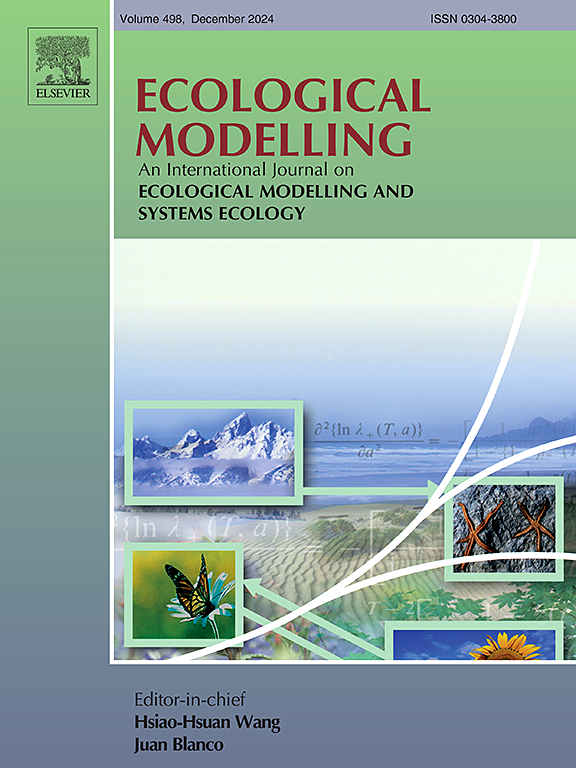Sampling effort required for fitting spatially explicit models of species distribution dynamics
IF 2.6
3区 环境科学与生态学
Q2 ECOLOGY
引用次数: 0
Abstract
Understanding and accurately predicting species distribution dynamics is essential for effective biodiversity conservation and management. Spatial dynamic occupancy models (SpDynOcc models) provide a valuable framework for analyzing temporal changes in species occurrence but require substantial data, making it critical to understand their data needs for reliable estimates. In this study, we use a simulation approach to investigate the role of survey effort, both in terms of study duration and spatial coverage, in obtaining accurate predictions from a generic SpDynOcc model. We also test the efficacy of two alternative sampling designs compared to random sampling. We varied multiple factors influencing species occurrence and detection (initial occupancy, occupancy dynamics, and probability of detection) to study the way in which they affect the data requirements for accurate parameter estimation. Models performed best with longer study durations, higher spatial coverage, and higher effective probability of detection (i.e., over all survey occasions). Nevertheless, the specific minimum sampling coverage needed notably varied based on initial occupancy and on occupancy dynamics scenarios. Preferential habitat sampling performed particularly well for low initial occupancy and high-decrease scenarios. These results indicate that tailored survey strategies are essential and must be informed by the specific ecological context. Our findings provide guidance on the survey designs needed to obtain accurate SpDynOcc model predictions, aiding researchers in the effective application of these models for studying species spatial occupancy dynamics.
求助全文
约1分钟内获得全文
求助全文
来源期刊

Ecological Modelling
环境科学-生态学
CiteScore
5.60
自引率
6.50%
发文量
259
审稿时长
69 days
期刊介绍:
The journal is concerned with the use of mathematical models and systems analysis for the description of ecological processes and for the sustainable management of resources. Human activity and well-being are dependent on and integrated with the functioning of ecosystems and the services they provide. We aim to understand these basic ecosystem functions using mathematical and conceptual modelling, systems analysis, thermodynamics, computer simulations, and ecological theory. This leads to a preference for process-based models embedded in theory with explicit causative agents as opposed to strictly statistical or correlative descriptions. These modelling methods can be applied to a wide spectrum of issues ranging from basic ecology to human ecology to socio-ecological systems. The journal welcomes research articles, short communications, review articles, letters to the editor, book reviews, and other communications. The journal also supports the activities of the [International Society of Ecological Modelling (ISEM)](http://www.isemna.org/).
 求助内容:
求助内容: 应助结果提醒方式:
应助结果提醒方式:


